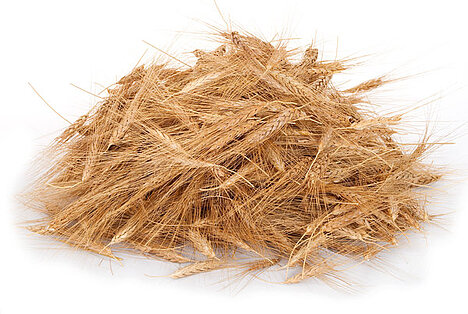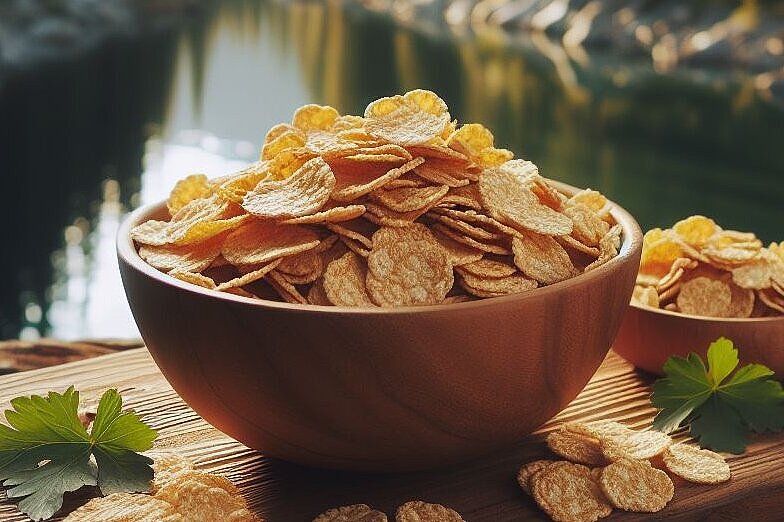Wheat flakes

Wheat flakes are a popular food for dogs that is made from wheat grains. Wheat flakes contain lots of carbohydrates, fiber, vitamins and minerals that are important for your dog's health. But is wheat flake suitable for every dog? What are the advantages and disadvantages? In this article, you'll find out everything you need to know about wheat flakes for dogs.
What are wheat flakes?
Wheat flakes are wheat grains that have been steamed, rolled and dried. They have a flat, oval shape and a yellowish color. Wheat flakes are often eaten as muesli or porridge, but are also used as animal feed. Wheat flakes are a cereal product and are a source of carbohydrates for dogs.
What are the benefits of wheat flakes for dogs?
Wheat flakes have several benefits for dogs that you should be aware of. Firstly, they provide energy and satiate your dog. Secondly, they contain fiber, which promotes digestion and regulates bowel movements. Wheat flakes are also rich in vitamins, such as vitamins B1, B2, B6 and E, as well as minerals, such as iron, zinc, magnesium and calcium. These nutrients support your dog's immune system, nervous system, skin and coat.
What are the disadvantages of wheat flakes for dogs?
Wheat flakes also have some disadvantages for dogs that you should not ignore. For one thing, they can trigger allergies or intolerances if your dog is sensitive to grains. Symptoms can include itching, skin rashes, diarrhea or vomiting. Secondly, they can lead to obesity or diabetes if your dog eats too much of them. Wheat flakes have a high glycemic index, which means that they cause blood sugar levels to rise and fall quickly. This can lead to food cravings and insulin resistance.
How do you feed wheat flakes to dogs?
If you want to feed your dog wheat flakes, there are a few things you should bear in mind. Firstly, you should always make sure that your dog does not have an allergy or intolerance to wheat. If you are unsure, you can ask a vet for advice or do a food test. Secondly, you should always feed your dog the right amount of wheat flakes. The amount depends on your dog's size, age and activity level. As a rule of thumb: one teaspoon of wheat flakes per kilogram of body weight per day. Thirdly, you should always boil the wheat flakes with water or broth and leave to cool before giving them to your dog. This makes them softer and more digestible. Fourthly, you should always mix the wheat flakes with a high-quality wet or dry food. This ensures a balanced diet for your dog.
Wheat flakes are a dog food that has both advantages and disadvantages. It provides energy, fiber, vitamins and minerals, but can also cause allergies, obesity or diabetes. If you want to feed your dog wheat flakes, you should always pay attention to his tolerance, feed the right amount, boil the wheat flakes and mix them with a good food.
If you notice any signs of hypersensitivity or poisoning in your dog, you should see your vet immediately. We are not a substitute for a vet, but we try to be as accurate as possible. Every dog reacts differently and we recommend you get a second opinion or consult your vet if in doubt.
Stay healthy and take good care of your four-legged friend!😊
Similar to Wheat flakes
Amaranth flakes are the pressed seeds of the amaranth plant, which belongs to the foxtail family. Amaranth is not a real grain, but a so-called pseudo-cereal with similar properties. Amaranth was...
Wholemeal wheat flakes are made from the whole grain of wheat. This means that they contain all the components of the grain: the germ, the endosperm and the husk. This makes them rich in fiber,...
Whole grain corn flakes are made from the whole corn kernel, which is first steamed and then pressed into flakes. They therefore contain all the components of the grain, such as the husk, the germ...
Millet flakes are made from millet grains, a gluten-free grain known for its high nutrient content. A special steaming and rolling process is used to form the grains into flakes, making them easier...



